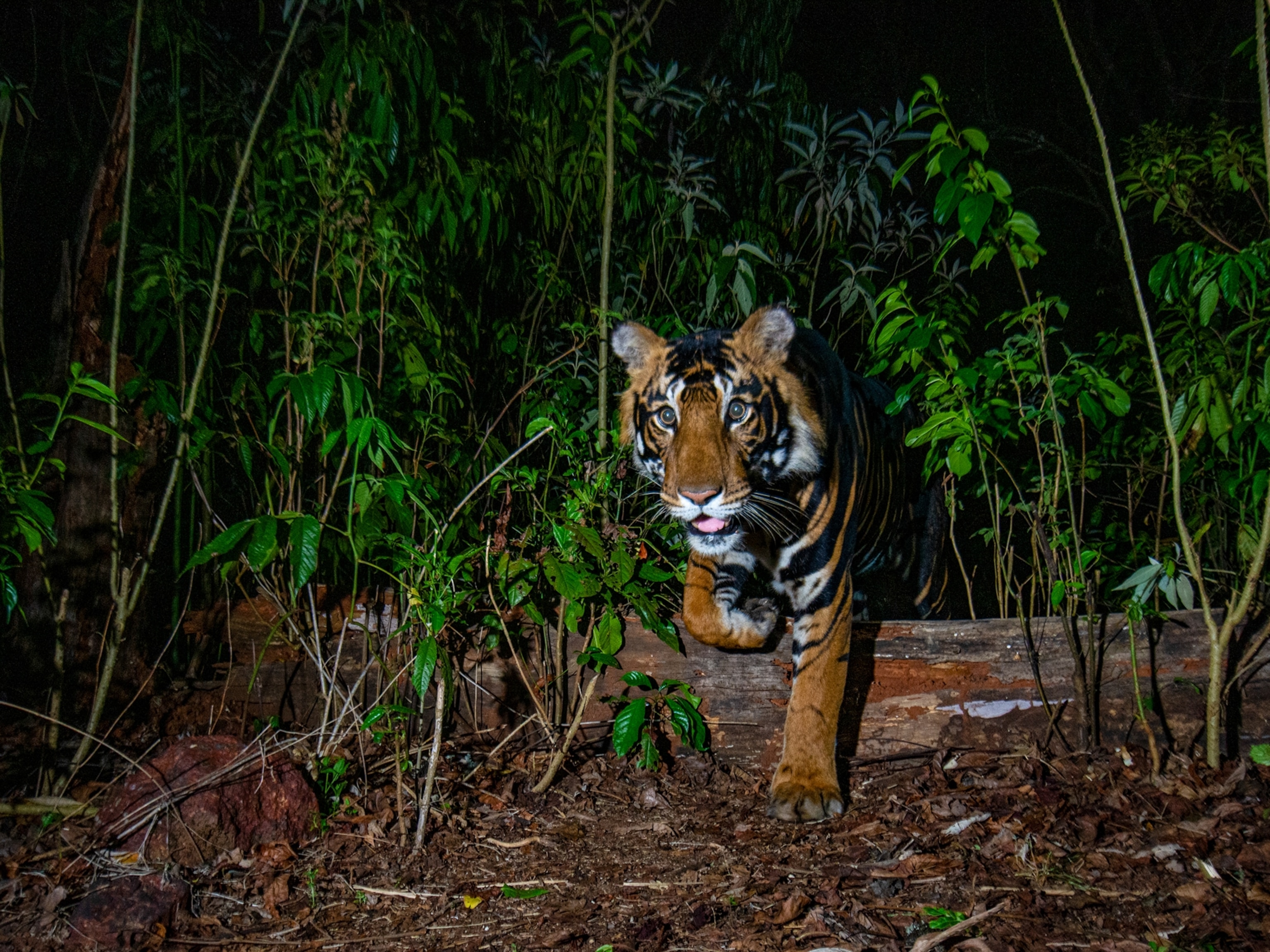Rare Wildcat Spotted in Texas
Camera traps in a south Texas wildlife refuge spotted a new ocelot roaming through the park. Only about 50 individuals have been identified in the state.
When a young ocelot was caught on camera late last year, wildlife officials at Laguna Atascosa Wildlife Refuge in south Texas suspected they might be spotting an individual never before seen in the park.
Those photos were blurry, however, so the officials couldn't be sure if they were seeing a new addition to the area or simply a different angle of an ocelot that had been seen before.
More cameras were deployed in the area in the following spring, and the young female was seen on camera several times thereafter. By studying the ocelot's spots, biologists confirmed that it was in fact a new individual. They named it OF333 (they weren't being sentimental). So far, biologists have not been able to bait and trap OF333 for study, but they hope to eventually fit the cat with a tracking collar.
Ocelots once ranged from far south Texas to Louisiana and Arkansas, but according to reports from the U.S. Fish and Wildlife Service, only 50 individuals have been identified in Texas and 80 to 100 are estimated to exist in the region. Worldwide, the International Union for the Conservation of Nature classifies ocelots as being of "least concern," meaning they face no eminent threat of extinction as a whole. Populations in North America, however, are precipitously low to be sustained long term. Loss of habitat from industry growth, agriculture, and booming populations have destroyed 95 percent of the habitat in which the cat once roamed.
Last December, a litter of ocelot kittens was caught on camera on the Yturria Conservation Easement north of Laguna Atascosa, and additional litters were spotted in the refuge itself. The rare sighting gave conservationists hope that populations could grow.
Still, habitat loss continues to be a threat, and one development project in particular has caused concern among wildlife experts.
The proposed U.S.-Mexico border wall advocated by the Trump administration has the potential to impact species at risk in the region, biologists warn. An assessment published in the journal Diversity and Distributions identified three key areas where populations are at risk from further border construction: California, the Madrean "sky islands" of Arizona, and the Texas Gulf Coast. While the study did not identify ocelots as one of the animals most at risk, it noted that overall species richness could be impacted, and barriers have the potential to decrease genetic diversity by making it more difficult for the cats to access new mates.
Ocelots in the Santa Ana Wildlife Refuge face more direct threats from this construction. The Texas Observer first reported in mid-July that the wall would run directly through the refuge.
While Laguna Atascosa sits roughly 40 miles north of the border, ocelots may still be impacted. That's because adult ocelots have a large range. Males range as far as 25 square miles, and females as far as nine square miles. They begin to explore when they reach maturity (roughly one to two years). It's during this time they most risk being hit by cars.





